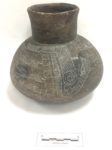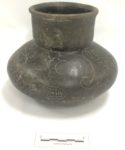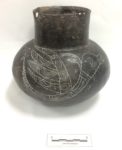It’s been almost 40 years since thieves broke into the Erskine Ramsey Archaeological Repository at the Moundville Archaeological Site near Tuscaloosa, Alabama, and made off with 264 Native American artifacts, a fifth of the total number of artifacts excavated at the site and an agonizing 70% of the museum-quality pieces. Clay vessels exemplifying eight centuries of Mississippian artistry and craftsmanship were gone without a trace.
Thirty-eight years passed. Not a single one of hundreds of stolen objects was found in all that time. An FBI investigation turned up nothing and ended in the late 1980s. This May, a private organization of archaeologists and other donors decided to heat up this long-cold case by offering a reward for information leading to the recovery of any of the stolen artifacts. The Associates for the Return of Moundville Artifacts ultimately raised enough money for a $25,000 reward and established a confidential tip line (still active at 205-348-2800) for would-be informants to call. Nobody expected it to work.
It worked. Less than three months after the reward was announced, three clay pottery vessels stolen from the Erskine Ramsey Archaeological Repository in 1980 were returned to the Moundville Archaeological Park.
“We were all thinking we’d go to our graves without anything turning up from this burglary,” said Jim Knight, curator emeritus of American Archaeology for the Alabama Museum of Natural History at UA, at a press conference held to announce the find Monday. “This is one of the most exciting things that has happened during my archaeological career.” […]
“I didn’t have a whole lot of hope for actual recovery,” said John Abbott, director of Museum Research and Collections for the Alabama Museum of Natural History. “In fact, I was stunned when there were some that turned up.”



As the investigation is ongoing, authorities are not commenting on the how and why of the vessels’ recovery. All they’ll say is that nobody has claimed the $25,000 reward.
The pots were made for ceremonial use and are in impeccable condition. Whatever adventures they’ve experienced over the past four decades have not damaged them in any way. There are no chips, fractures or scratches. The original museum marks are still on them.
All three vessels depict religiously significant iconography. One features a skull, skeletal forearms and hands with crosses inside. Two are incised with images of a winged serpent, a combination creature like a sphinx or chimera with the tail of a rattlesnake, the antlers of a deer and bird wings. In the Mississippian culture at Moundville, the snake god was the lord of the underworld.
Bill Bomar, executive director for University of Alabama Museums, noted the advances in research into iconography, symbols and art that have taken place since the theft nearly four decades ago. UA faculty and students will also be able to study whether the vessels originated or were traded here.
“All of this has advanced in the last 40 years, and we haven’t had these artifacts to do those kinds of studies on,” he said. “Hopefully with these, and any additional ones that are recovered, our information about Moundville is going to increase greatly.”
The pieces will go on display at Moundville Archaeological Park shortly.